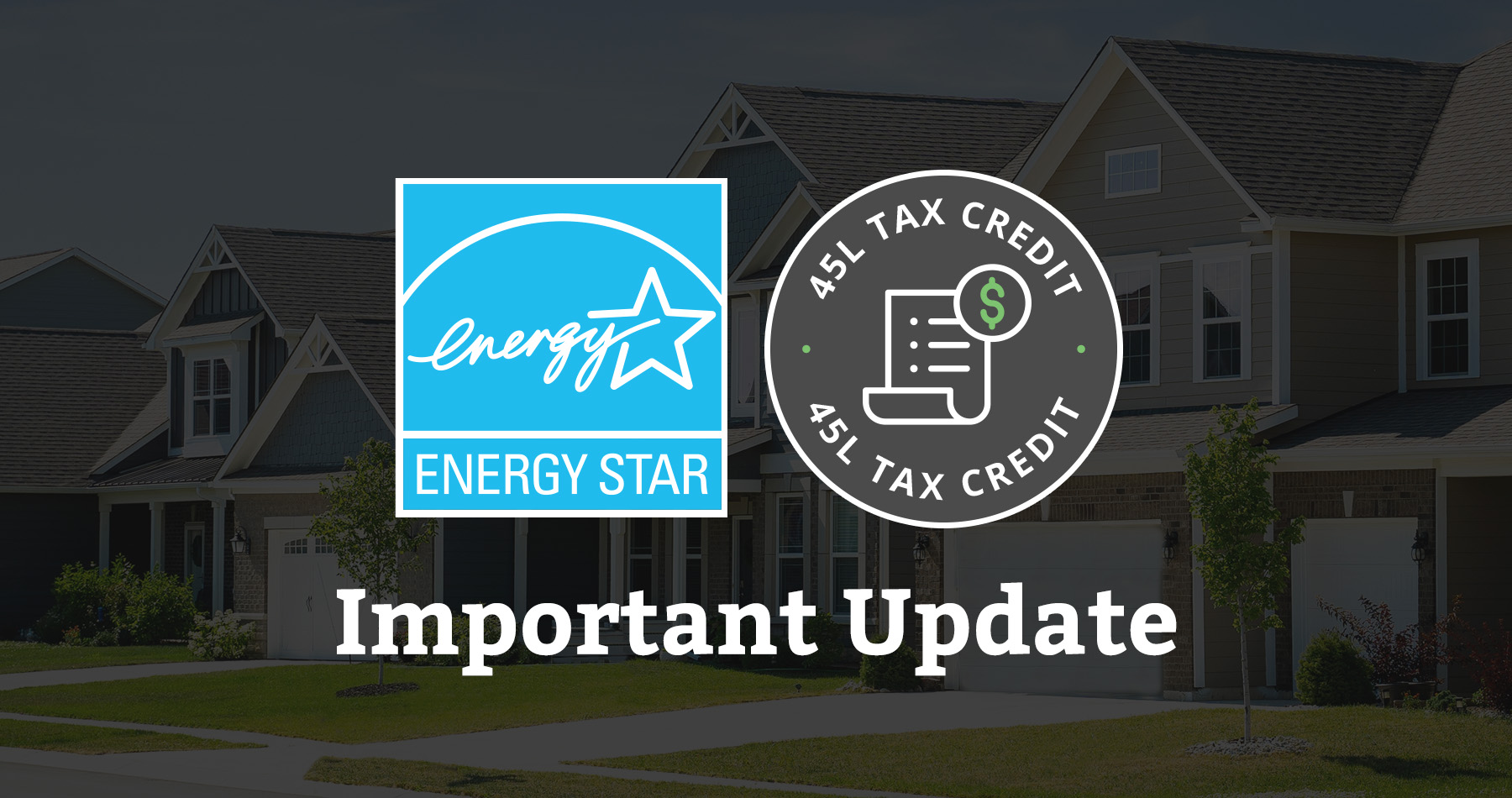
The Uncertain Futures of the ENERGY STAR Program and the 45L Tax Credit
May 23, 2025In the last two weeks, since the media reporting about a possible end to ENERGY STAR, there have been some new developments regarding the ENERGY STAR program.
EPA Administrator Zeldin testified on Tuesday at a hearing and confirmed the media reporting about his intention to relocate the ENERGY STAR program, possibly to the private sector, and incorrectly claimed that the ENERGY STAR program is not required by law to be run by federal agencies. ENERGY STAR was originally created in the 1990s, but the Energy Policy Act of 2005 mandated that the ENERGY STAR program be operated by the EPA (with support from DOE). Federal legislation would be required to change that.
There are a lot of potential outcomes here. It’s possible EPA could simply try to push the limits of what the law requires by defunding and/or deprioritizing while continuing to operate it. It’s also possible that EPA could try to transfer more responsibilities to DOE.
Ultimately, we suggest a wait-and-see approach here. ENERGY STAR is a highly complex, multifaceted program with thousands of stakeholders, that has existed for over 30 years. Accordingly, it will not be easy to simply unwind it or transfer to the private sector, and currently federal law does not allow that anyway.
There will assuredly be more news about this in the coming weeks and months. For those interested in learning more now about the future of the ENERGY STAR program, we suggest this article from Green Building Advisor and this podcast from Building Efficiency Resources, on which our CEO, Matthew Kaplan, was a guest among other industry leaders.
More urgently, on Wednesday night, the House of Representatives passed the Republican reconciliation bill. The bill includes a full repeal of the 45L Tax Credit for homes acquired after the end of 2025, or the end of 2026 for homes that were already under construction as of May 12, 2025.
For background, the 45L Tax Credit (45L) was created in the Energy Policy Act of 2005 and signed into law by President George W. Bush. From 2006 to 2022, qualification for 45L was based on energy savings vs. energy code (IECC). The Inflation Reduction Act of 2022 extended the credit through 2032, increased the amount of the credit, and changed the qualification requirements to be based on ENERGY STAR (with a higher amount for additionally earning Zero Energy Ready Home certification).
The reconciliation bill now goes to the Senate. We suggest that everyone reach out to their Senators directly, and through trade organizations like NAHB, to explain that homebuilders and developers across the country have invested significant time and money to build homes that are eligible for the tax credit, and this near-immediate repeal would completely pull the rug out from under businesses and housing projects that have been planned for multiple years out. This includes many low-income and affordable housing projects. The path to energy independence and housing affordability for our nation is not to make it more expensive to build homes and to have them use more energy.
In addition to lobbying to prevent the outright immediate repeal, we suggest that you consider contingency planning in case the repeal becomes law. If you are developing ENERGY STAR homes that either:
- a) Did not start construction before May 12th and will not be acquired for use as a residence by the end of 2025; or
- b) Started construction before May 12th but will not be acquired for use as a residence by the end of 2026.
then you should consider if the business viability of pursuing ENERGY STAR for these homes depends on 45L. There are many intrinsic benefits of ENERGY STAR, including ensuring the quality installation of insulation, air barrier, and HVAC systems that improve quality assurance and risk management while reducing operating costs. However, many of these benefits can also be obtained by the Home Energy Rating System (HERS) process itself, even if the HERS process isn’t being used to verify ENERGY STAR, or through building commissioning. If pursuing ENERGY STAR does not make sense for your business without 45L, then you should consider not pursuing ENERGY STAR for any homes that meet either of the above criteria.
While these rapidly unfolding events are occurring simultaneously, it’s important to keep in mind that the ENERGY STAR program and the 45L Tax Credit are two different things. The more immediate and serious concern to homebuilders and developers is the repeal of 45L, which the residential construction industry has benefited from for the past two decades.
For anyone in the residential construction industry, or anyone whose business has otherwise benefitted from 45L in the past two decades, the most important thing you can do right now is to call your U.S. Senator’s office and tell them your personal story about how 45L has helped your business as well as housing affordability. Explain how disruptive it is to abruptly end a tax credit that has been in effect since 2006 and is currently extended through 2032, which businesses have spent years planning and incurring costs to utilize. Explain to U.S. Senators the timing and planning involved in the design and construction of residential housing, especially multifamily housing, and the pivotal role that 45L plays in making homes more affordable to build and operate.
CLICK HERE TO CALL YOUR U.S. SENATORS AND TELL THEM TO SAVE 45L.